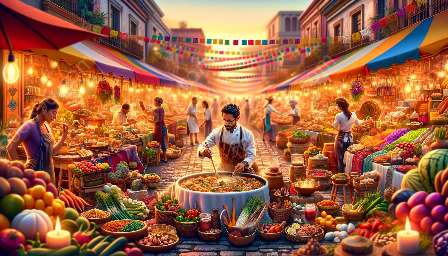Venezuelan cuisine offers a rich and diverse culinary experience deeply rooted in historical influences that have shaped its evolution over the centuries. To understand the essence of Venezuelan cuisine, it is essential to explore its historical context, including the indigenous, European, African, and other cultural influences that have contributed to its unique flavors and traditions.
Indigenous Influences on Venezuelan Cuisine
Venezuelan cuisine has strong roots in the culinary traditions of its indigenous populations, including the various indigenous tribes that inhabited the region prior to the arrival of European settlers. Many of the staple ingredients in Venezuelan cuisine, such as corn, beans, cassava, and various tropical fruits, can be traced back to the dietary practices of the indigenous peoples. Staples like corn are often used to make arepas, a popular Venezuelan flatbread that serves as a versatile base for many traditional dishes.
European Influences on Venezuelan Cuisine
The Spanish conquest of Venezuela in the 16th century introduced European culinary influences that significantly shaped the country's culinary landscape. The Spanish brought ingredients such as wheat, rice, and livestock, which became integral components of Venezuelan cuisine. The fusion of Spanish culinary techniques and indigenous ingredients gave rise to traditional Venezuelan dishes such as hallacas, a type of corn dough stuffed with a stew of meats and other ingredients, wrapped in plantain leaves, and then boiled or steamed.
African Influences on Venezuelan Cuisine
The introduction of African culinary influences to Venezuela can be traced back to the transatlantic slave trade, during which African slaves brought their culinary traditions to the region. The fusion of African flavors and cooking techniques with indigenous and European ingredients resulted in the development of new dishes and flavor profiles in Venezuelan cuisine. Dishes like pabellón criollo, a traditional Venezuelan meal consisting of shredded beef, black beans, rice, and fried plantains, reflect the influence of African culinary traditions.
Other Cultural Influences on Venezuelan Cuisine
In addition to indigenous, European, and African influences, Venezuelan cuisine has also been shaped by various other cultural influences, including those from Middle Eastern and Italian immigrants who brought their culinary traditions to Venezuela. This diversity has contributed to the wide array of dishes and flavors found in Venezuelan cuisine, making it a vibrant tapestry of different cultural elements.
Evolution of Venezuelan Cuisine
Over time, the blending of these historical influences has given rise to a diverse and flavorful culinary tradition that is uniquely Venezuelan. The combination of indigenous, European, African, and other cultural influences has resulted in a wide variety of traditional dishes, snacks, and beverages that showcase the richness of Venezuelan cuisine. Whether it's the hearty comfort of a traditional sancocho soup or the sweet indulgence of bienmesabe, a dessert made with coconut milk, the historical influences on Venezuelan cuisine continue to shape the country's culinary identity.
Conclusion
Venezuelan cuisine is a reflection of the country's rich and diverse history, characterized by a blend of indigenous, European, African, and other cultural influences. The culinary traditions of Venezuela offer a vibrant tapestry of flavors and dishes that highlight the unique amalgamation of historical ingredients, cooking techniques, and cultural interactions. Exploring the historical influences on Venezuelan cuisine provides valuable insights into the country's culinary heritage and the ways in which different cultures have contributed to its rich and varied gastronomic landscape.

